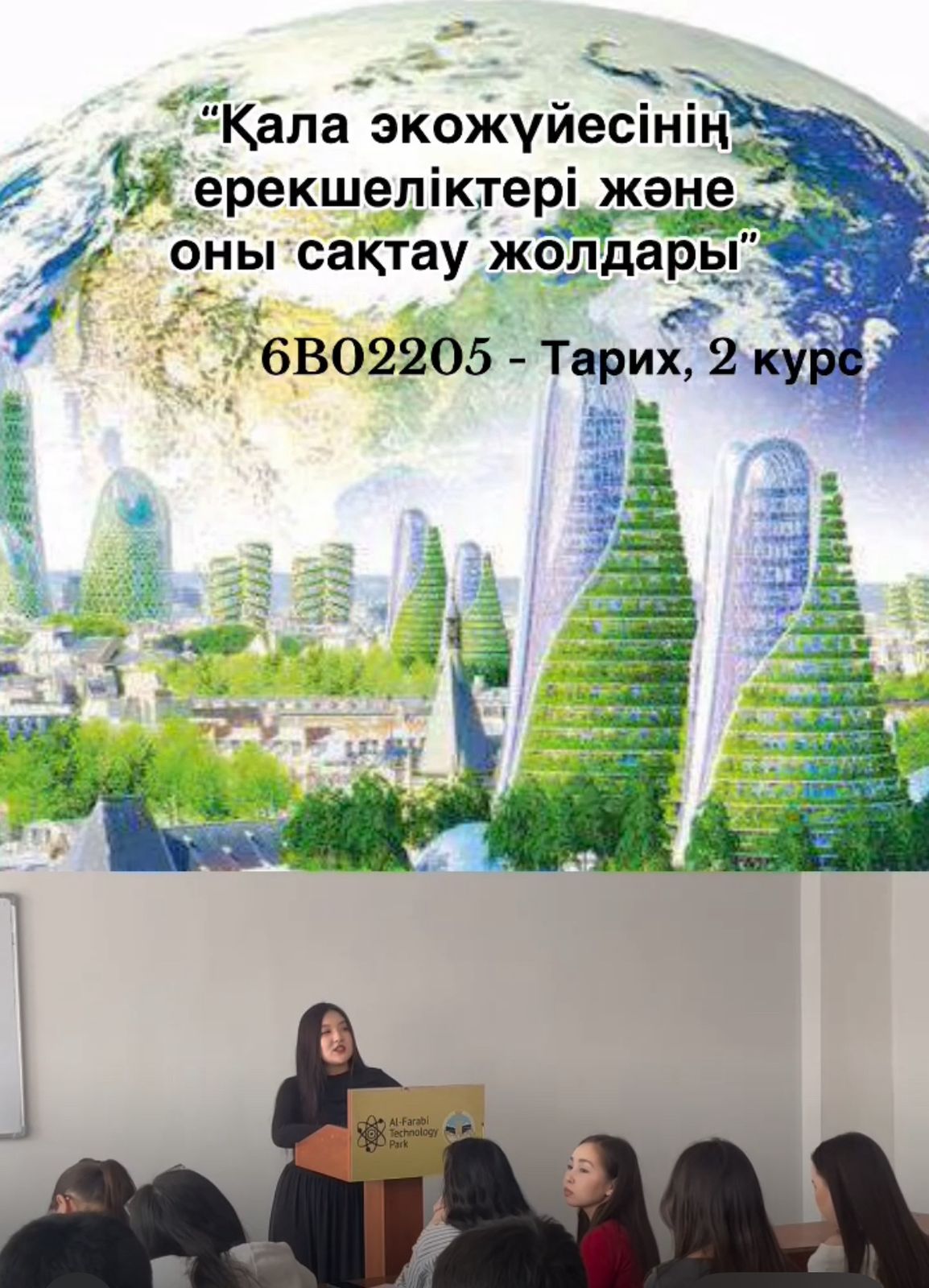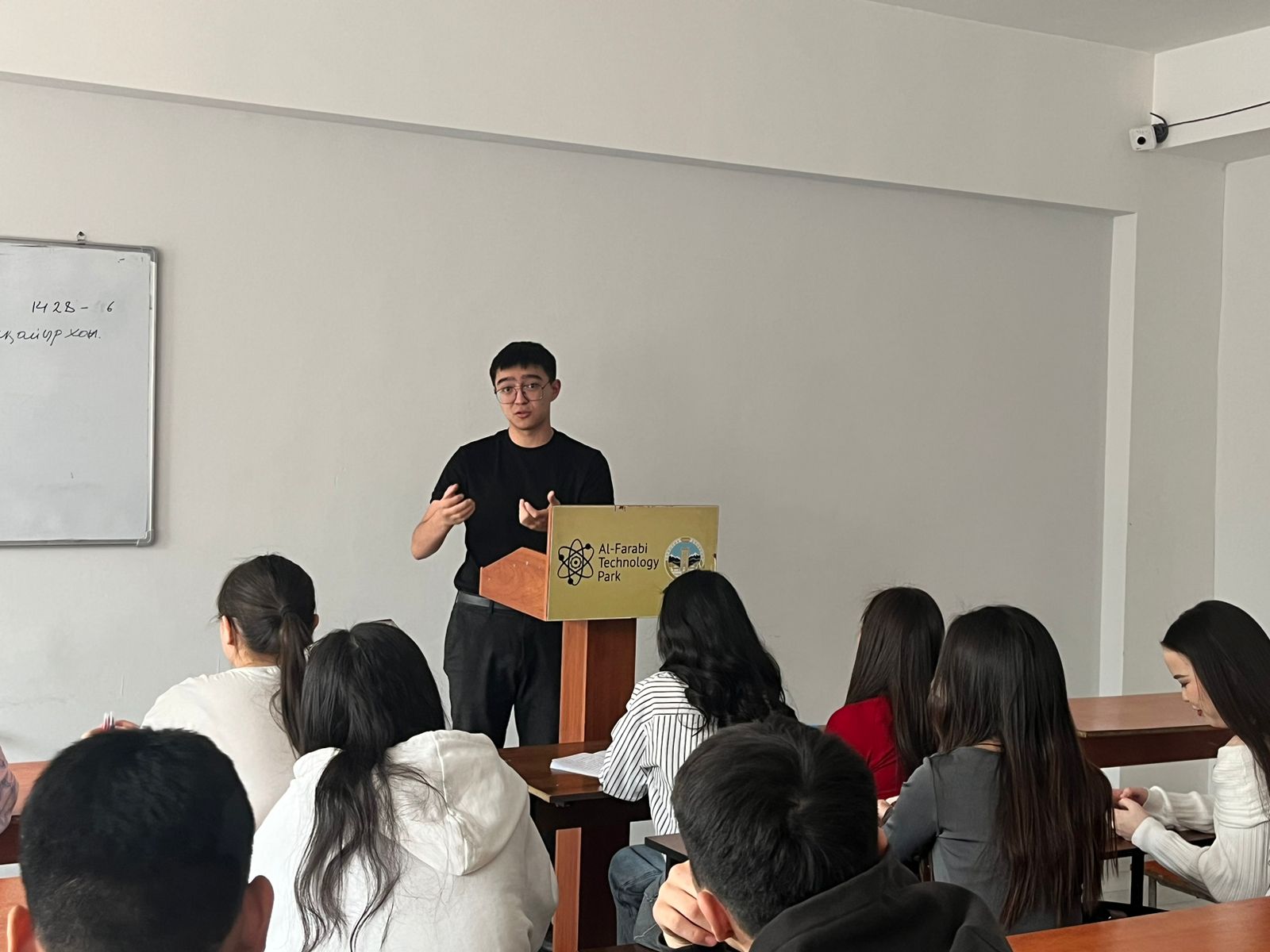Features of the Urban Ecosystem and Ways to Preserve It



Among the United Nations Sustainable Development Goals (SDGs), Goal 11 – “Make cities and human settlements inclusive, safe, resilient, and sustainable” is directly focused on the development of urban ecosystems.
Today, urban life has become a central aspect of human civilization. More than half of the world’s population currently lives in cities, and by 2050 this figure may reach 70%. With the ongoing process of urbanization, the pressure on ecological balance continues to grow. In this context, understanding the features of urban ecosystems and identifying ways to preserve them is one of the key tasks of the Sustainable Development Goals (SDGs).
On 27.03.2025, 1st year doctoral students of the specialty “History” Tasilova A.A. and Abildos R. held an event “Features of the urban ecosystem and ways to preserve it” with students of group 6B02205. The purpose of the event is to understand the importance of Regions among young people that play an important role in the development of human civilization, but have a great impact on the environmental balance. Within the framework of the event, a discussion and suggestions were made among students. The urban ecosystem is a complex system made up of natural and artificial elements. Under the influence of human activity, the features of this ecosystem are changing and the environment is gaining weight. Therefore, maintaining the stability of the urban ecosystem is one of the main tasks of every citizen and authorities.The urban ecosystem has many differences over the natural landscape. First of all, its main feature is the predominance of anthropogenic factors. In the city, all environmental processes are closely related to human activity: the construction of buildings, the laying of roads, the development of production facilities have a significant impact on the ecosystem. The urban ecosystem is a complex system that creates favorable conditions for the existence of humanity, but affects the ecological balance. Its protection and preservation is the responsibility of each resident, and not only of the authorities. The increase in green areas, the transition to environmental transport, waste recycling, and the development of ecological culture ensure the sustainability of the city's ecosystem. Nature conservation is an important step for futuregenerations.It will be possible to preserve and improve the urban ecosystem if each person consciously looks at the environment.


